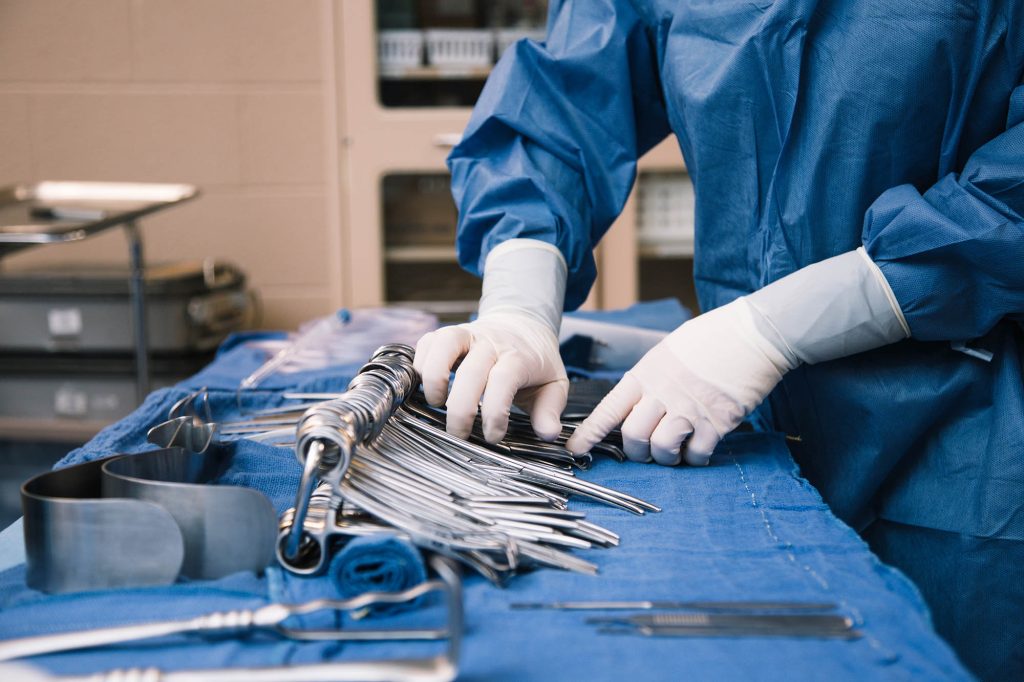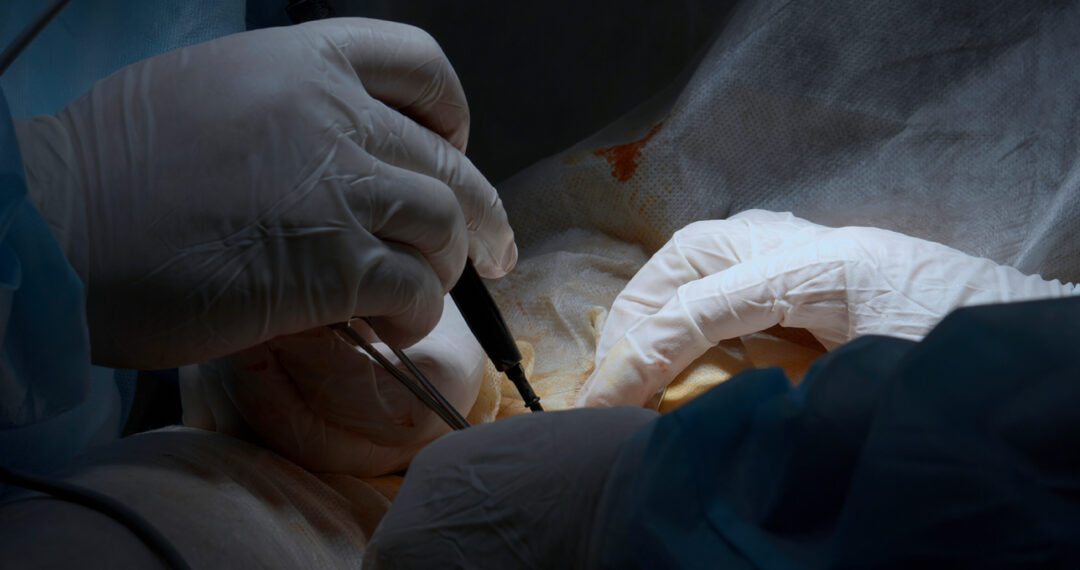When Surgical Counts Fail, Adjunct OR Technology Becomes a Necessity
When Surgical Counts Fail Adjunct OR Technology Becomes a Necessity

In a surgical setting, healthcare professionals strive to avoid mistakes with stringent controls and tried-and-true procedures that reduce the risk of errors. But when those impossible-to-account-for moments happen during surgery, they can lead to severe consequences for all involved, whether that’s guilt and financial repercussions for the surgical team or, more seriously, impacting the health and well-being of the patient. So, what can OR teams do to mitigate the risks and prepare themselves for the unforeseen?
Like a pilot managing sudden turbulence, the proper tools and knowledge can help make the unexpected an inconvenience rather than a crisis.
Our last blog explored the repercussions of retained surgical items (RSIs). We looked at two real-world examples of these “never events” from a recent article in The Philadelphia Inquirer. Now let’s explore what situations can lead to RSIs, two more examples from the Inquirer article, and how adjunct technology can help OR staff respond when the unpredictable happens.
What are the Common Causes of RSIs?
Traditional surgical counts are among the most essential precautions OR staff take to reduce the chances of an RSI. This fundamental OR protocol is the first line of defense, ensuring that all tools used in the surgery are accounted for before, during, and after the procedure. But sometimes, manual surgical counts can be insufficient. Here are a few examples of things that complicate a surgery, making surgical counting more difficult or impossible.
Human Error
Operating rooms are high-pressure environments where fatigue, stress, and distractions can easily lead to mistakes. Surgical staff work long hours, often performing intricate procedures that require intense concentration. Under such conditions, it’s not uncommon for a lapse in attention to result in an item being overlooked during the counting process.
Complex Procedures
The complexity of a surgical procedure can significantly increase the risk of retained items. Long surgeries, especially those involving multiple teams of surgeons, nurses, and technicians, create numerous opportunities for items to be misplaced or forgotten. The more complex the procedure, the more challenging it is to maintain an accurate count of all instruments and materials.
Non-Surgical Items
Not all items that can be left behind in a patient are traditional surgical tools. Broken parts of equipment or even personal items, like jewelry, can end up inside a patient’s body. These items might not be included in the initial count, so they would likely be overlooked.
The Philadelphia Inquirer Article covers one example that underscores the limitations of counting non-surgical items that inadvertently become part of the surgical environment. A 17-year-old girl undergoing jaw surgery experienced an unexpected complication when a metal bracket from her braces broke off during the procedure. The bracket was not recognized as a potential foreign object despite thorough counting protocols. Over time, it migrated into the soft tissue of her neck, leading to a severe infection.
Shift Changes
During lengthy surgical procedures, shift changes among the operating room staff are inevitable. These transitions can lead to miscommunication and errors in tracking surgical items. Critical information about items used or left on the surgical field might not be accurately conveyed to the incoming team, increasing the risk of something being missed.
Small Item Detection
Certain items are inherently difficult to track and detect. Small or fragmented items, such as tiny pieces of gauze or broken needles, can be particularly challenging to account for. Manual counting and standard imaging techniques like X-rays might not always detect these small objects1, making it more likely they will be left behind.
Emergency Situations
The urgency to save a patient’s life in emergency surgeries can disrupt standard protocols. Surgeons and operating room staff must act quickly, often foregoing the usual meticulous counting procedures to address immediate threats to the patient’s health. This rapid response environment makes it easier for items to be inadvertently left behind.
In another case mentioned in the Inquirer article, a 28-year-old woman underwent an emergency C-section. The urgency of the situation meant there was no pre-count of surgical sponges. Unfortunately, one sponge was left inside her body, leading to an infection that necessitated the removal of parts of her colon and appendix. Despite following up with an X-ray, the sponge was not detected, highlighting the potential for human error and the limitations of current detection methods in emergency scenarios.
Mitigating Risk with Adjunct OR Technology
Traditional counting methods and X-rays play essential roles but are not foolproof. While issues like those above are sometimes unavoidable, the right tools and knowledge empower OR staff to handle unexpected situations with confidence and efficiency. The stories of the 17-year-old girl and the 28-year-old woman particularly underscore the critical need for adjunct technology in surgical procedures. Adjunct OR technologies offer a vital backup and sometimes a more efficient and easier-to-deploy solution. Implementing these technologies not only helps detect and remove foreign objects during surgery but also boosts the overall efficiency and confidence of the surgical team. By reducing the reliance on manual counting alone and incorporating advanced detection systems, hospitals can potentially mitigate the risk of RSIs for better patient outcomes.
Let’s look at examples of adjunct technology and how they could have helped in the abovementioned situations.
RFID Technology
Radio-frequency identification (RFID) technology is a powerful adjunct tool that enhances the tracking of surgical items, especially in high-pressure environments like emergency surgeries2. For the 28-year-old woman who had a surgical sponge left inside her during an emergency C-section, RFID tags on sponges could have made a critical difference. RFID systems can digitally track each tagged item, ensuring that all sponges and other materials are accounted for, even in the most chaotic and time-sensitive situations.
The Melzi™ Sharps Finder™
The Melzi Sharps Finder is an advanced tool to detect small metallic objects that might be missed during routine surgical counts. In the case of the 17-year-old girl with the broken metal bracket lodged in her neck, the Melzi Sharps Finder could have detected the broken bracket quickly during a check of the surgical area before the surgery was concluded, allowing the surgical team to remove it before closing the incision. This proactive approach would have prevented the ensuing infection and the need for additional medical interventions.
In Conclusion
Eliminating RSIs is an ongoing challenge requiring a comprehensive strategy incorporating cutting-edge adjunct technologies. With the right tools, the medical community can significantly enhance patient safety, minimize preventable errors, and swiftly address unavoidable issues. As hospitals increasingly adopt emerging technologies like the Melzi Sharps Finder and RFID, they can potentially improve the accuracy of detecting lost instruments before they become a serious risk.
Contact us today to learn more about the Melzi Sharps Finder and our mission to enhance patient safety through affordable and effective technology!
Sources:
- J, Adams, Ph. D., J Noel, Ph.D. (2022) Needle Size and Detectability Study. (Available Upon Request)
- Rogers A, Jones E, Oleynikov D. Radio frequency identification (RFID) applied to surgical sponges. Surg Endosc. 2007 Jul;21(7):1235-7. doi: 10.1007/s00464-007-9308-7. Epub 2007 May 5. PMID: 17484000.
Follow Melzi Surgical
"*" indicates required fields
Recent Posts




